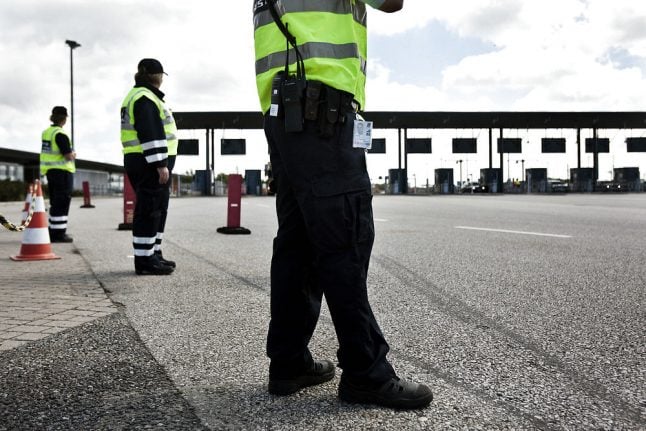The Danish government announced last month that it would bring in controls on the border, citing recent bomb explosions and gang violence.
The border checks will take place at all border crossings one or more times per week.
People travelling across the border will therefore need to carry the proper identification such as a passport or driving licence.
In a confirmation issued on Monday, Denmark’s National Police confirmed the border control was now effective and reaffirmed its intention of “preventing serious and organized crime from spreading”.
All travellers should be prepared to show identification, the police statement added.
Copenhagen and surrounding areas have been subjected to a series of explosions and gang-related shootings in recent months.
Those incidents include an explosion at the Tax Agency in the Nordhavn area of the city, for which police suspect two Swedish men. No serious injuries occurred.
“We are targeting organized crime and it is a stated goal for normal travellers to be affected as little as possible by the border control. The frequency of checks will depend upon current status of investigations and local conditions and traffic flow,” National Police director Lene Frank said in the statement.
Border control will take place in the form of spot checks and periods in which police controls will be in place. This will apply to ferry crossings between Sweden and Rønne (Bornholm), Helsingør (Zealand), Frederikshavn and Grenaa (both Jutland); traffic as on the Øresund Bridge and on all rail connections between Sweden and Denmark, Franks confirmed.
Stockholm has meanwhile announced its own response to a recent spate of violent crime incidents including explosions and fatal shootings in Sweden.
EU rules allow temporary border control within the Schengen zone for up to six months, after which application must be made to member states via the Commission's council of ministers to extend the arrangement.
Commuters between Copenhagen and Malmö and others who regularly cross the Denmark-Sweden border are likely used to bringing passports with them, given that Sweden has had its own controls in place since the European refugee crisis in late 2015.
Denmark has had checks in place on its border with Germany since January 2016, having extended them on several occasions.



 Please whitelist us to continue reading.
Please whitelist us to continue reading.
Member comments